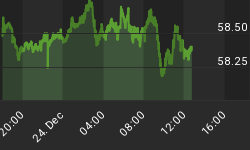The following is part of Pivotal Events that was published for our subscribers Thursday, August 13, 2009.
SIGNS OF THE TIMES:
Last Year:
"Teen Retailers are Showing Signs of Distress"
- Wall Street Journal, August 8, 2008
"European Luxury Car Makers Feel Pain"
- Wall Street Journal, August 8, 2008
"Mortgage-Market Trouble Reaches Big Unions"
"Students Face Hit as Private Lending Dries Up"
- Wall Street Journal, August 11, 2008
It seems there was some foreshadowing of the classic fall crash.
* * * * *
This Year:
"Farmland prices, which advanced for 21 years, couldn't escape the worst plunge in real estate since the Great Depression."
- Bloomberg, August 5, 2009
Oddly enough that decline in farmland was the worst since the Great Depression of 1873 to 1895.
"Back in February, no one really knew if the investment-banking business was going to survive. The world has changed dramatically in the past 5 months, and now banks are hiring."
- SIFMA, August 11, 2009
"New York Fed in Hiring Spree"
"Aggressively hiring traders as it seeks to manage its burgeoning securities holdings."
- FT.com, August 11, 2009
One would have thought that central planners would have done the hiring before the aggressive buying. Must have been panicdotal buying.
* * * * *
STOCK MARKETS
In February we reviewed the possibility of a post-crash revival out to around May, which approximated the rebounds in the year following the crashes of 1929 and 1873. Ross noted that a retracement of between 25% and 40% was probable. A Few weeks ago this was refined to a Fibonacci 38%. On the S&P this was 1014. So far the closing high has been 1010 on Friday.
As it turned out, there was a good high in early June, followed by a tradable decline. This became overdone as we published our July 9 edition, when we noted that the decline had been rewarding and had likely run its course.
The next timing target was for a high in August, some five months after the crash low. Typically the fall crash low was set in November and the rebound ran for some five months, when the contraction resumed. The initial crash completed in early March. Also, Ross noted that the 1938 model counted out to an important high in August.
Tuesday's S&P ChartWorks reviewed recent weakening and provided a couple of oscillator targets. The observation was that a slump could lead to an interesting fall. Included was Ross's version of the "Presidential Model", which calls for an important high in early August.
At the moment there is little adversity in the yield curve and in credit spreads, but, the DX seems to be working on a rally, with yesterday's decline related to the miracles associated with FOMC announcements. That there is debate whether the benchmark rate should be zero or 0.25% mainly suggests that central bankers have a sense of humor. Of course the key question remains - what does the Fed know that the markets don't know? Very little.
Credit Spreads: The attached chart on the TED spread dramatically shows the complacency that prevailed until May-June, 2007 when we expected the killer change in the credit markets to start. By that fateful June, there had been enough change to conclude that "the greatest train wreck in the history of credit" had started.
On the spread from bills to euro dollar rates, the catastrophe culminated last fall and has narrowed with the revival in financial markets that we thought could run into late spring. Using the five-month count from the stock market low, running into August makes sense.
However, there is not much "good" left in the TED action, and a rebound seems inevitable.
Similarly, longer maturities have enjoyed a remarkable decline in yield from, for junk, 42% in early March to 17.06% on Tuesday. The spread, over treasuries, narrowed from 3800 bps to 1255 bps on Monday. There has been a miniscule increase in yield and widening since.
This shows up in the JNK chart, which price action has faltered since Monday and is close to giving the MACD "sell". This would be the first step for our aggressive sell on corporate bonds. The next step will be the MACD on the high-yield (CRE), which has a long enough chart to show two previous patterns that concluded a big rally. Investors have been advised to lighten up into the rally.
Reckless action in the carry trade in spreads and the curve has reached Biblical proportions, and the consequent deluge could be of Biblical dimensions as well. Needless to say, but central bank employment of their shopworn theories has been Biblically reckless as well.
Link to Friday, August 14 'Bob and Phil Show' on Howestreet.com: http://www.howestreet.com/index.php?pl=/goldradio/index.php/mediaplayer/1337
















